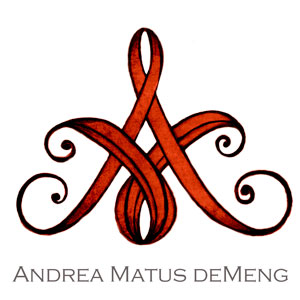The concept of needing balance in one's life is not a new one. Elusive...yes, but definitely not new. In fact the principle of achieving balance has found its way into many cultures, religions, and civilizations. Native American wisdom says to walk lightly upon the earth and live in balance and harmony. Temperance. After first glance, the card seems to lack some of the sizzle that you might get with cards like Death, the Tower, the Magician....those are cool cards. Often underestimated though, the temperance card is about one extremely important aspect of achieving happiness in life. Balance. The unification of those things in this world that are diametrically opposed to create a new harmony. The way that fire and water create steam, the temperance card is about creating a balance where one would think that it cannot exist. But how does one create such balance? Patience. And a consistent movement between elements to bring them together. This card in many ways more than others reminds me of some of the magic that happens when we create art. At various points in the creative process we juggle, and when things go incredibly well, we often call it, "getting into our flow". We approach our piece with a certain amount of patience allowing the muse to work through us. A flow between different elements in a piece, the give and take necessary to create a balanced composition, and the perfect moment inbetween two extremes where we create the harmony, where we create art. Not surprisingly, in some decks, this card, magical number 14, is called the Art card.
The traditional depiction of Temperance is a woman, often winged, angelic and poised. She stands quite still as she continuously pours water, the elixir of life, between two vessels. Typically one of the vessels is silver and the other is gold...the union of Heaven and Earth. Cups in the world of Tarot often represents elements in the emotional realm. The water flowing tirelessly back and forth striving always for that perfect moment of equilibrium. The triangle, as a powerful symbol of ancient egypt signifies intelligence and a capacity for love. A symbol for movement and direction, the greek letter delta, mathematically defined as change. While not recognized by all tarot readers, the consensus seems to be that triangles pointing up also make a reference to that which is divine.
In my own version of the Temperance card, I've included symbolism for my re-interpration of the card. The elusive nature of achieving balance between elements is emphasized by creating the artwork on several layers allowing the interplay between the solid and transparent elements as they harmonize to achieve the finished image. On the bottom most layer is the image of a woman, head tilted engagingly, peaceful, and contemplative in her expression. Over this we see another face, staring directly at the viewer, almost through the viewer. The two aspects both depicted but united within the composition. The concept of mastery of emotions. Balance. In lieu of water flowing, endlessly, the use of stripes appears. Parallel lines that continue infinitely, and oriented vertically to visually show the link between the earthly and the divine. Black and white stripes, the light and the dark of everything, again visually emphasizing the harmony and beauty that can be created with an appropriate balance between two extremes. Yin and Yang. The number 14, the number of the card of course, as used to reference the halfway point in the lunar cycle. The number is below two additional layers that build the cup shape (the emotional aspects of the card) around it. The circle, a shape of perfection, symmetrical no matter how you split it in half. Below the circle, a hexigon, an intermediate geometric shape serving as a gentle reminder that emotions can have hard edges and can be pointed on the journey to that perfect equilibrium. A hand from above pays homage to the classic interpretation that temperance is affiliated with something other worldly.
I'll leave you today with this quote from Victor Hugo..."To live in balance is good, to live in harmony is better."








